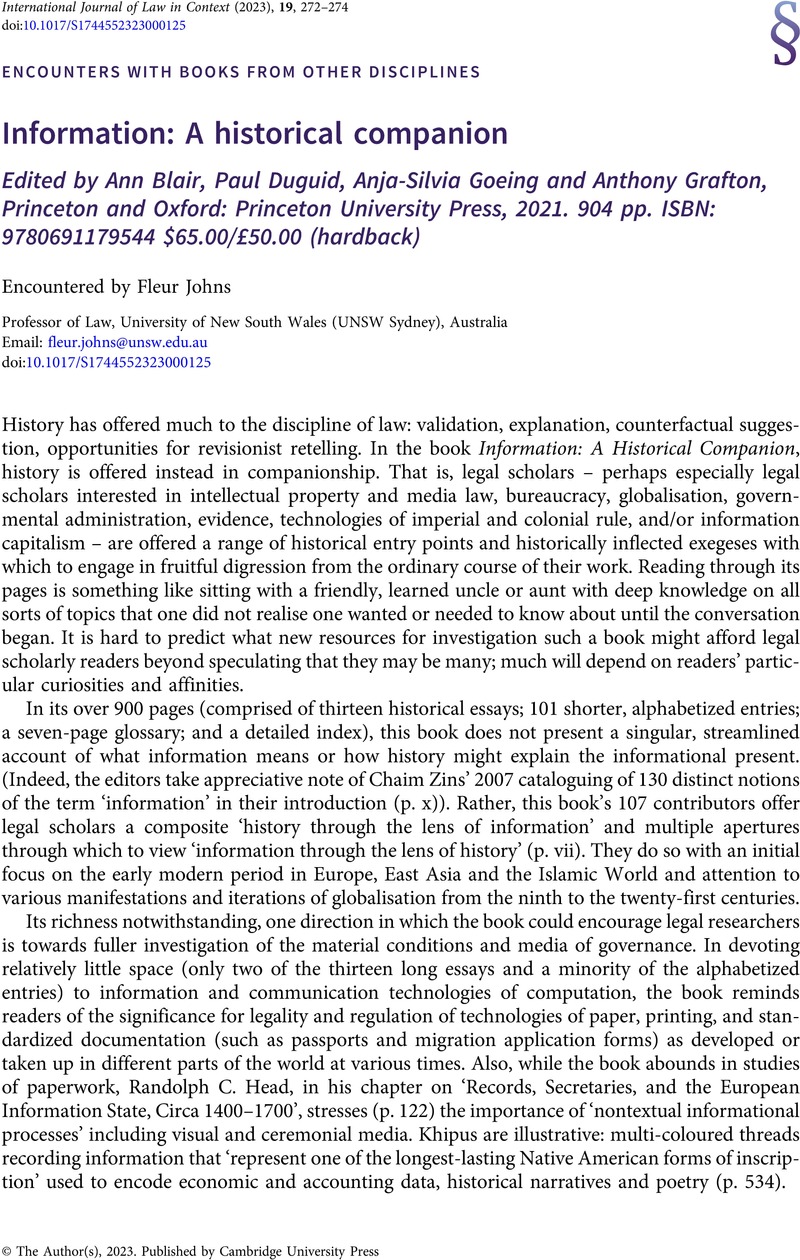No CrossRef data available.
Article contents
Information: A historical companion Edited by Ann Blair, Paul Duguid, Anja-Silvia Goeing and Anthony Grafton, Princeton and Oxford: Princeton University Press, 2021. 904 pp. ISBN: 9780691179544 $65.00/£50.00 (hardback)
Review products
Information: A historical companion Edited by Ann Blair, Paul Duguid, Anja-Silvia Goeing and Anthony Grafton, Princeton and Oxford: Princeton University Press, 2021. 904 pp. ISBN: 9780691179544 $65.00/£50.00 (hardback)
Published online by Cambridge University Press: 28 April 2023
Abstract
An abstract is not available for this content so a preview has been provided. Please use the Get access link above for information on how to access this content.

- Type
- Encounters with Books from Other Disciplines
- Information
- Copyright
- © The Author(s), 2023. Published by Cambridge University Press
References
Daston, L (2022) Rules: A Short History of What We Live By. Princeton: Princeton University Press.Google Scholar
Riles, A (ed.) (2006) Documents: Artifacts of Modern Knowledge. Ann Arbor: University of Michigan Press.10.3998/mpub.185485CrossRefGoogle Scholar
Vismann, C (2008) Files: Law and Media Technology (trans. Winthrop-Young, Geoffrey). Stanford: Stanford University Press.Google Scholar
Williams, GL (1948) What Is a Document?. The Modern Law Review 11(2), 150–162.10.1111/j.1468-2230.1948.tb00080.xCrossRefGoogle Scholar


